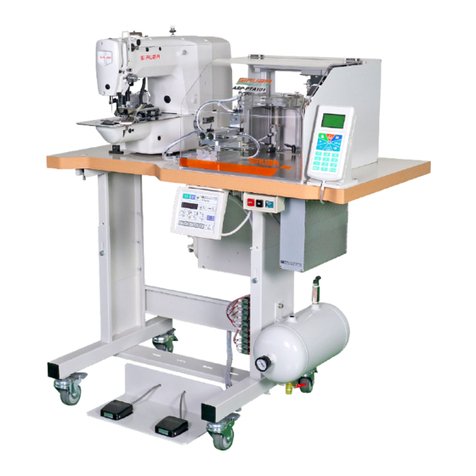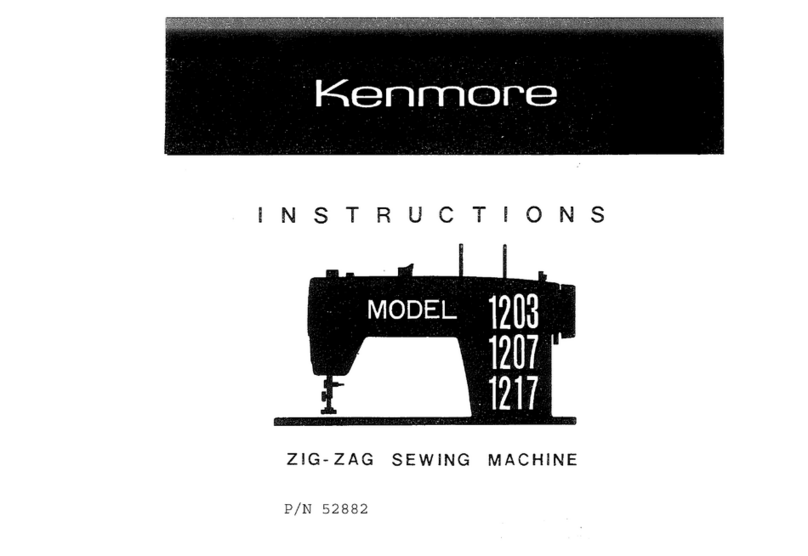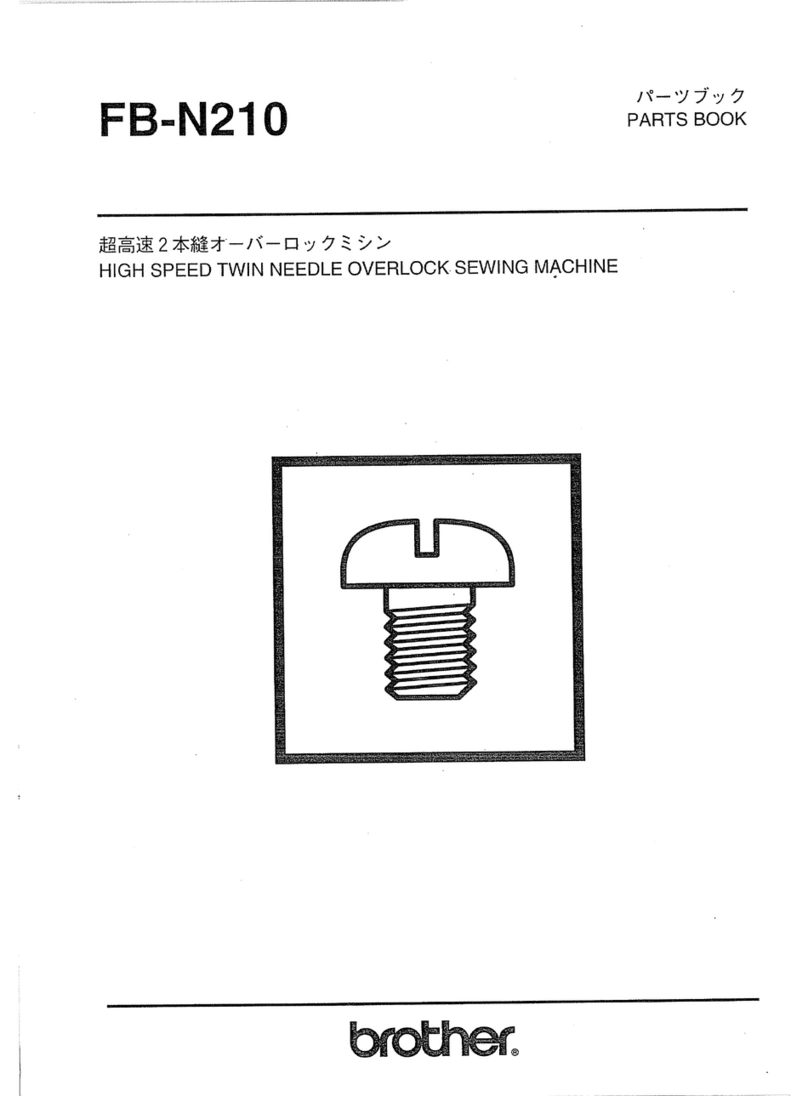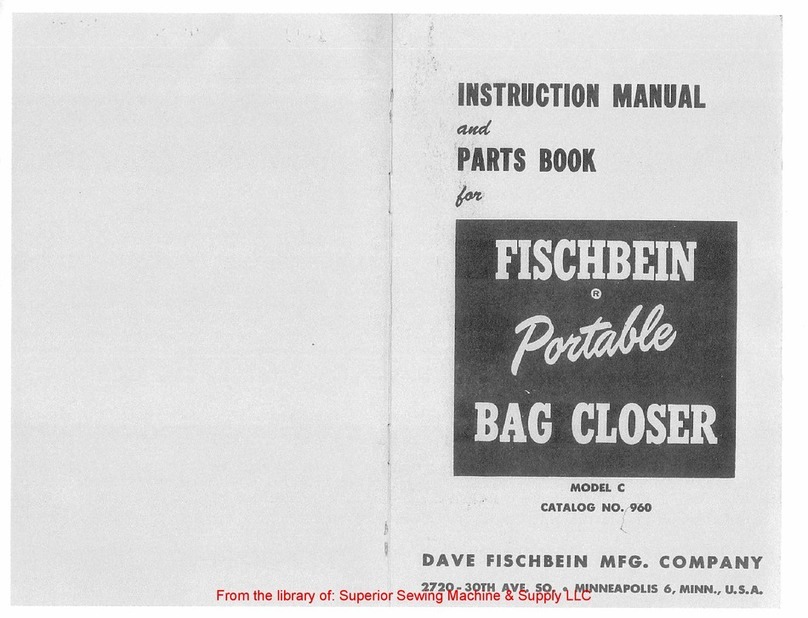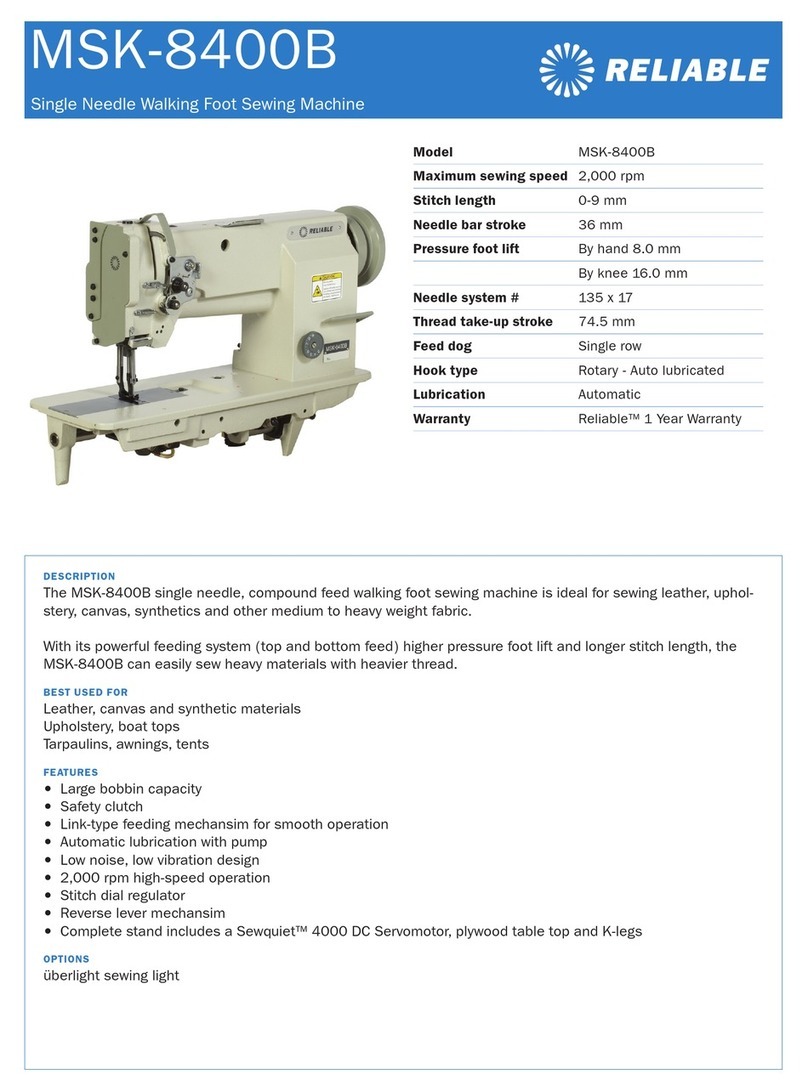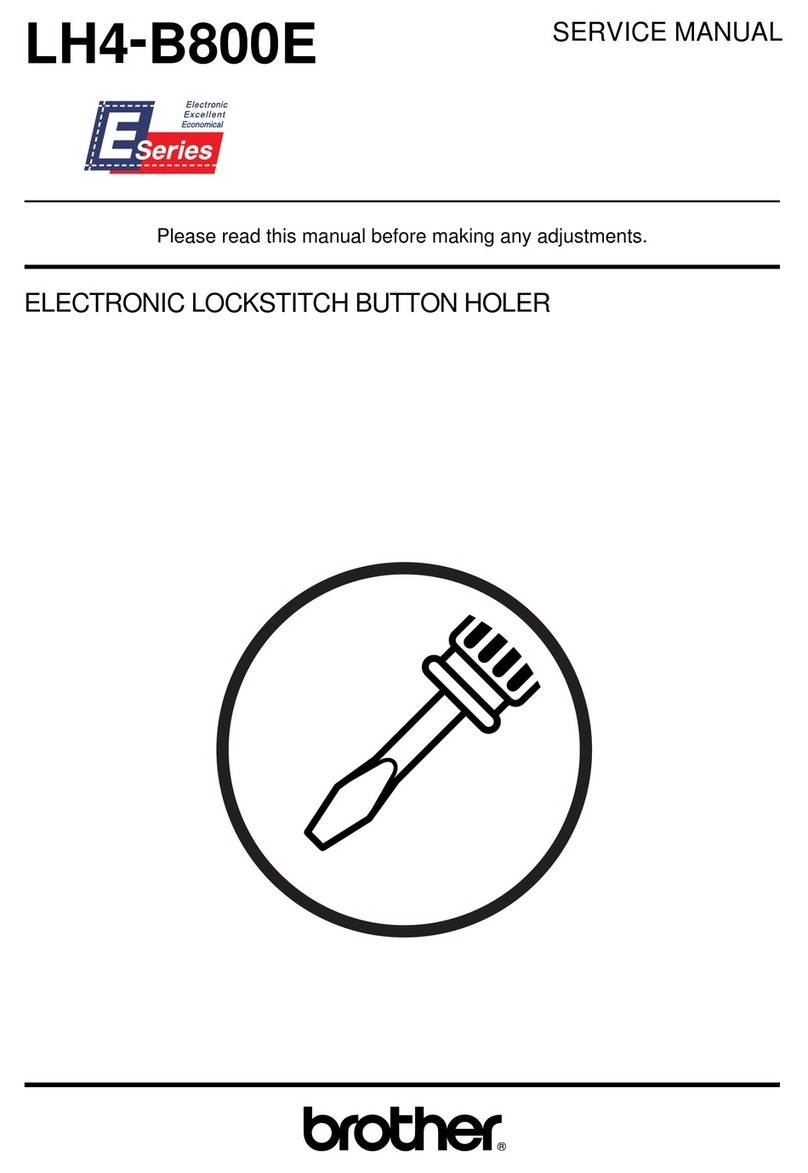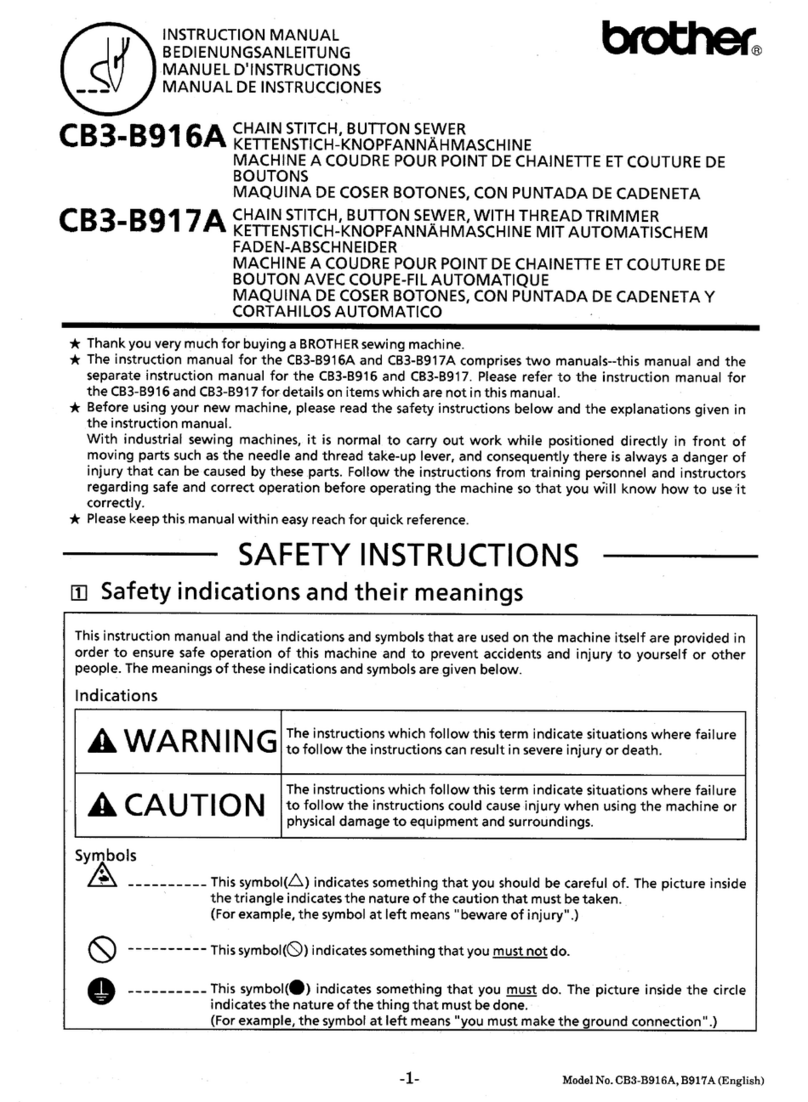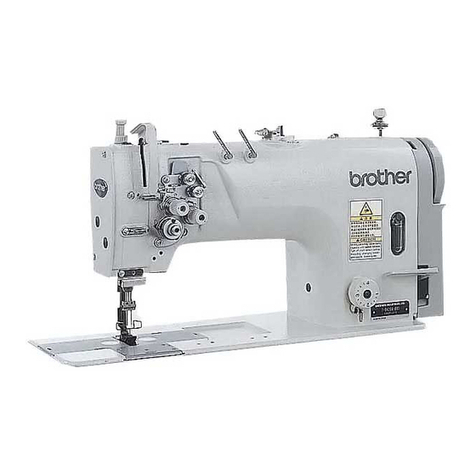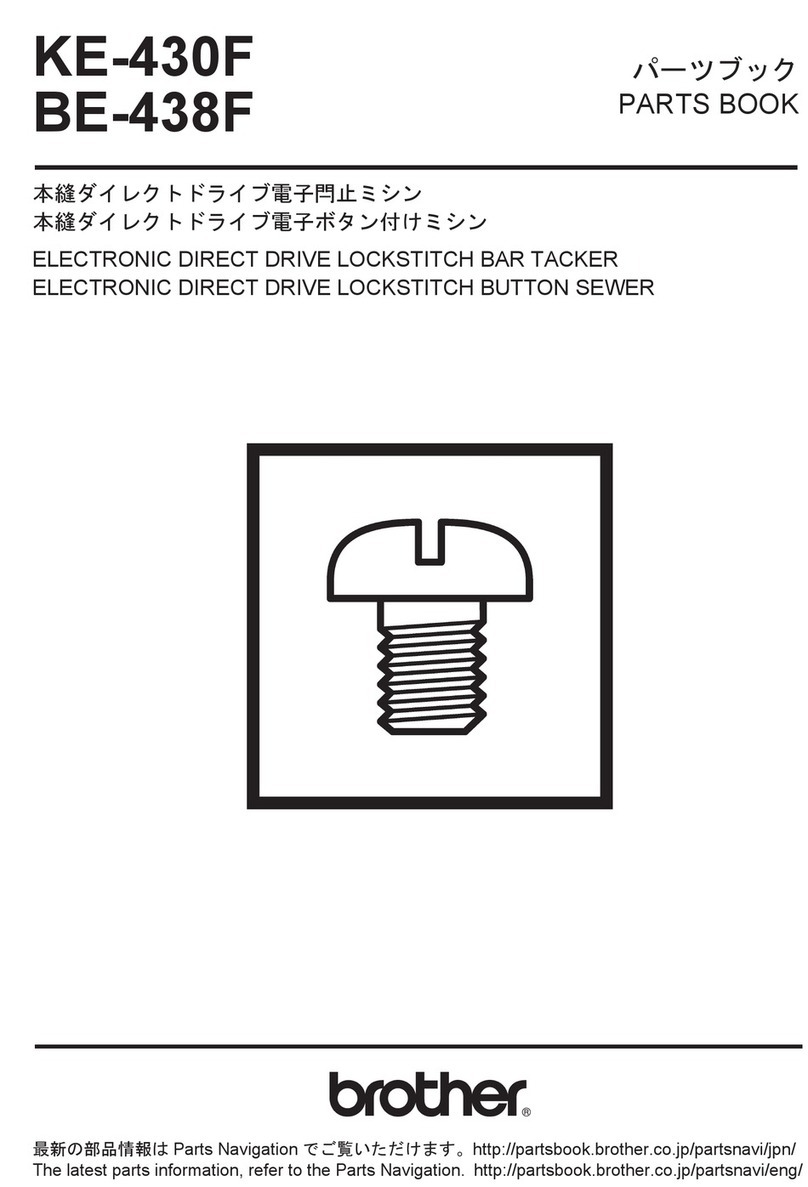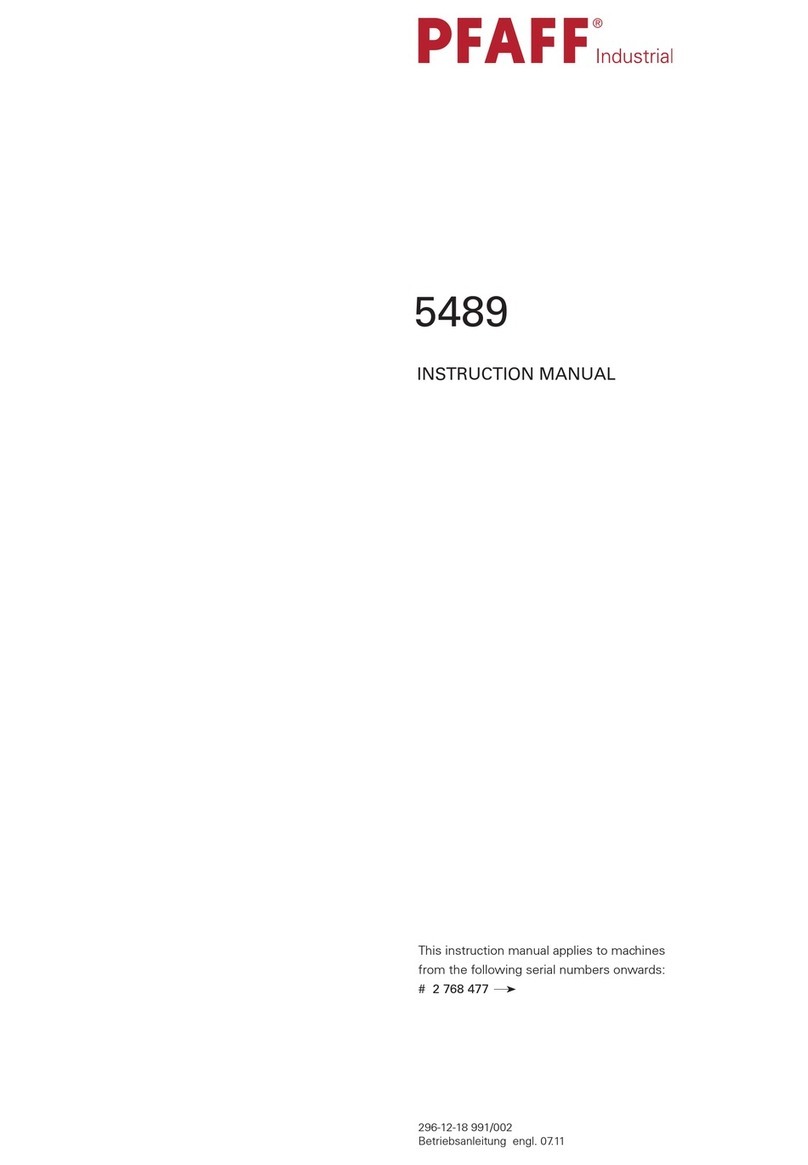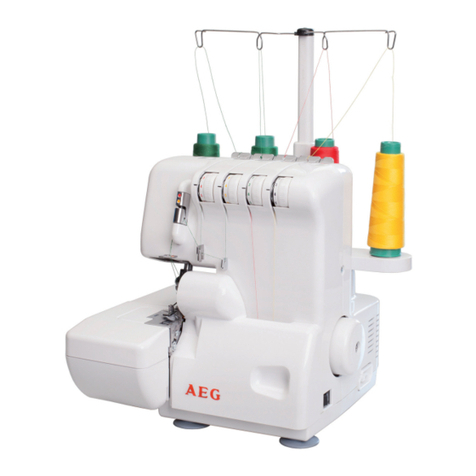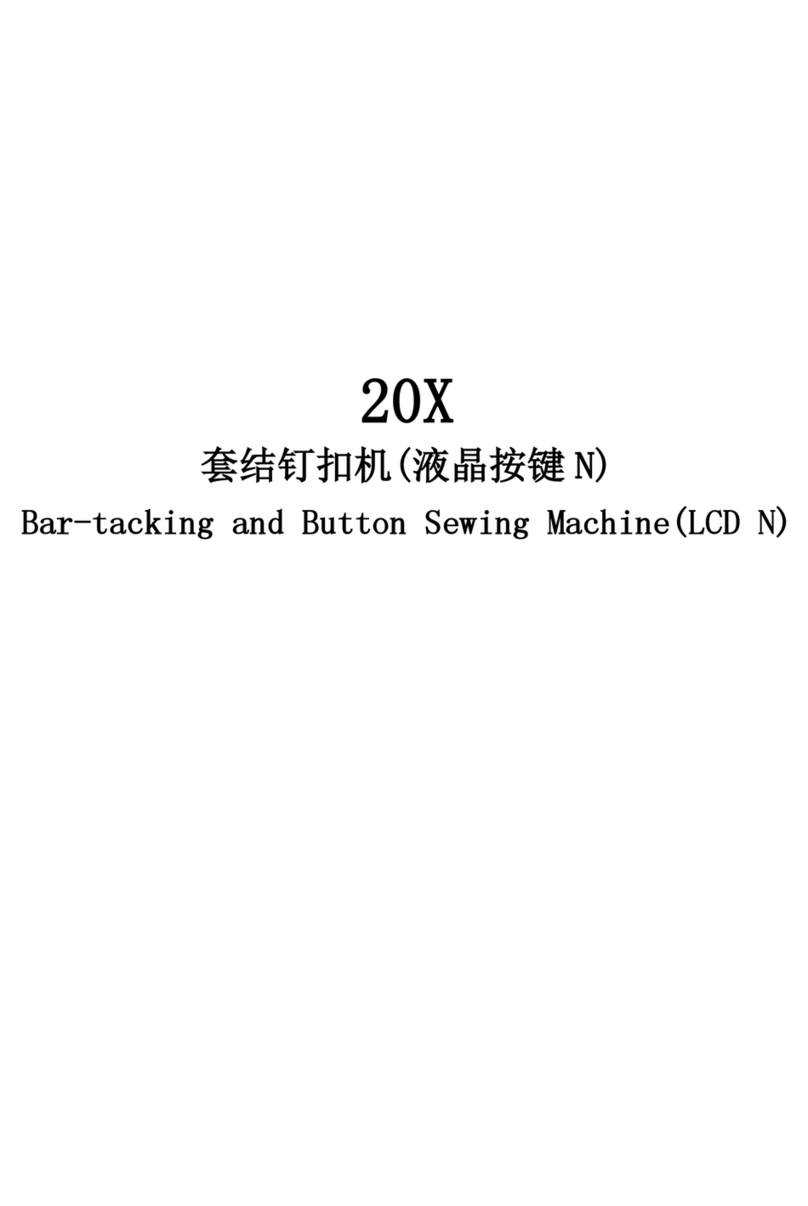TEXMAC HAPPY HCS Voyager Setup guide

TEXMAC Inc. HAPPY HCS Voyager Introduction Training page 1
HAPPY HCS Voyager: Level-1 Maintenance & Repair
Intermediate-level repair / maintenance procedures
Table of Contents
Oiling/Cleaning Page 2
Removing Voyager’s Outer Covers Page 3
Control Panel Modes: Maintenance/Reset Page 4
Removing/Reattaching the Moving Head Page 5
Options Menu Settings
Rotary Hook Timing Page 6
Moving Knife Timing Page 7
Moving Knife Positioning/Adjustment Page 8
Setting Presser Foot Depth Page 9
Setting Needle (Bar) Depth Page 10

TEXMAC Inc. HAPPY HCS Voyager Introduction Training page 2
It is important to keep the rotary hook area clear of lint & debris. Approx. every 40
hours of operation,
remove needle plate and blow clear with compressed air, turning the shaft to check all points. Also, ensure
the machine is always stored in a climate-controlled area. Temperature and humidity extremes can affect
the performance and even cause permanent damage.
Daily:
(or every 8 hours of
operation). Oil along the race of the
rotary hook (red arrow)
Weekly:
(or every 40 hours of operation). Oil upper & lower portions of
reciprocator & pressure foot shaft, and all needle bars through take-up lever slots.
Preventive Maintenance/Cleaning
Oiling your Voyager Machine
a
b
c
d

TEXMAC Inc. HAPPY HCS Voyager Introduction Training page 3
Remove the bobbin winder
. Remove both the tensioning knob and switch arm.
Remove these screws
. (Indicated by the red arrows).
Separate
the
locking tabs between
the
covers
. As shown in the 4 locations above.
Disconnect data cable
shown
.
Remove 1 external and 2
internal
screws
. As shown above.
Disconnect data port cable
. (cable for USB/serial/AN jacks).
Remove screws on
control panel
as shown
above, and manual color change knob.
S
crews
for control panel arm
C
olor
change knob
Removing Voyager’s Outer Covers
Remove the right-side cover first. (side without control panel). This can be done without removing the other side.
Some repairs including moving knife timing can be made by removing only this side cover.
Remove the left-side cover. (control panel side). Note: This cover can befreed enough without removing the control panel toallow
some common repairs: CPU board re-set/replace; serial/usb circuit board. Needle change cam repairs, presser foot motor.

TEXMAC Inc. HAPPY HCS Voyager Introduction Training page 4
Starting Voyager in Maintenance Mode
Some operations performed on Voyager require that the machine be started in Maintenance Mode. Follow this short procedure to start
Voyager in Maintenance mode.
1. Power off the machine. (Wait approx. at least 10 seconds after power-down before re-
start)
2. On the control panel, press and hold MENU while restarting. Menu button must be
held continuously while power switch is pressed.
3. Machine will appear to start normally. Standard “HAPPY” screen appears. Press
SET to continue.
4. Go to the Maintenance option. Press MENU and use the arrow keys to go to “Other”.
Then press SET to enter the “Other” sub-menu. Use the arrow key to navigate to
“Maintenance” and press SET.
5. Enter code. Use arrow keys to change code to 2251 and press SET.
The machine is now in maintenance mode. Additional functions are available from
this sub-menu that allow you to re-initialize the machine & perform other adjustments.
Warning: Exiting this “maintenance” sub-menu exits maintenance mode. If so, must re-
enter maintenance mode by re-starting the machine and following steps 1-5 above.
Re-Initializing Voyager
This procedure completely re-sets Voyager’s internal control panel firmware program.
1. Enter Maintenance Mode. Follow the procedure above.
2. Re-set Memory option. While in Maintenance mode, scroll down to Memory. Press SET, then OK. Machine runs quick
self-diagnostic and clears memory.
3. Exit Maintenance Mode and re-enter “Other” menu and go to “Setup”. Press MENU until returned to main menu. Enter
main menu again and scroll down to Other and press SET. In the “Other” menu, navigate to “Setup” and press ENT.
4. Perform “System” reset. In the Setup menu, 2 options will be available: “System” and “Speed”. Choose System and press
ENT. Display may flash.
5. Perform “Speed” reset. While still in the Setup menu, choose “Speed” and press ENTER. A warning will appear: “Caution!
Main shaft turns”. After a few seconds, main shaft will begin turning from its lowest speed, gradually accelerating to its full
1000 spm before stopping. After machine stops, return to main menu and re-start machine.

TEXMAC Inc. HAPPY HCS Voyager Introduction Training page 5
One on other side
of moving head as
well.
Removing/Re-Attaching the Moving Head
Remove the 2.5 mm hex screws located behind the moving head
As shown in the picture.
Recommended Options Menu Settings
Standard machine settings are located in the Options menu (select Machine icon to see menu below).You can adjust these
settings to control the behavior of certain tasks that Voyager performs, such as trims,jumps, thread break detection and more.

TEXMAC Inc. HAPPY HCS Voyager Introduction Training page 6
Part 2: Common Maintenance/Adjustment Procedures
Rotary Hook Timing on HCS Voyager
Preparation: Follow these short steps to prepare for Remove needle plate and loosen
rotary hook from its shaft.
1. Remove needle plate. Will allow access to rotary hook.-
2. Lower presser foot. With machine powered on, press P.FOOT to
lower. (or if powered off, manually turn gear)
3. Lower needle manually until it engages and locks down. Do this
manually.
4. Loosen retaining finger.
5. Loosen rotary hook on shaft. There are 3 screws (shown right)
Adjust rotary hook.
1. Turn timing wheel to 25degrees. You’ll find the timing
wheel at the rear of the machine.
2. Adjust rotary hook position as shown. Rotary hook must
be aligned in the following 2 ways:
a. Alignment with needle: Tip of
rotary hook must be passing
just behind needle.
b. Depth alignment: Hook must be positioned
as shown
Timing for HCS
Voyager is at 25
degrees.
Back of needle
should be 1
business cards’
width in front of the
point of the hook
Location of 3 set
screws. Loosen this
one first along the flat
portion of
the rear of the
hook assembly.
Loosen retaining
finger.
(2 red arrows)

TEXMAC Inc. HAPPY HCS Voyager Introduction Training page 7
Moving Knife Timing
From time to time, the moving knife can be knocked out of position or time due to jams, buildups (bird nests) or other events.
Result is failure to cut thread properly or cleanly. Follow the procedures on this page to time or position the moving knife.
Diagram of thread cut system. Refer to diagram below for the instructions on this page and the following.
CONTROL
PANEL SIDE
FRONT OF
MACHINE
Trim Cam.
Mounted on back of
main shaft. Imparts back-and-
forth
motion on lever system with
turning groove.
Trim Solenoid.
When trim
command is issued,
solenoid engages
spring-mounted
engagement roller
Engagement
roller. Is raised
manually or by
solenoid into groove
of trim cam
Drive arm.
Swivels
in place during the
trim cycle to move
the drive link
assembly
Timing Procedure
1. Preparation: Remove outer cover and
(optional) remove power supply.
2. Loosen collar. This de-couples the trim
cam from the main shaft.
3. Set timing wheel to 115 degrees.
This
is the timing point at which the roller
should engage the trim system.
4. Depress manual engagement lever
while performing step 6.
5. Press cam backwards firmly against
collar while performing step 6.
6. Manually turn trim cam until strong
resistance is encountered –at this point
moving knife is just beginning to open.
7. Re-tighten collar around trim cam.
Collar.
Locks trim
cam onto main shaft.
Loosen from set
screw.
Manual engagement lever.
(shown in green) allows you to
cycle the trimmer manually to re-
set the trim system.
Set screw
for trim
cam
Moving knife
(shown in open
position)

TEXMAC Inc. HAPPY HCS Voyager Introduction Training page 8
Moving Knife Positioning/Adjustment
Sometimes the moving knife can be knocked out of position. Follow this short procedure the re-position the moving
knife properly.
Procedure
1. Remove the right-side outer cover (non-control panel side). You won’t need to remove the other cover to do
this.
2. Loosen set screw. (see figure 2.6a below). Use 2 mm hex wrench.
3. Adjust eccentric bolt. This is the timing point at which the roller should engage the trim system. Adjust until
moving knife is positioned as shown in figure 2.6 c.
4. Re-tighten set screw.
Figure 2.6a.
Loosen this set screw with a 2mm
hex wrench.
Figure 2.6b.
Turn eccentric bolt until moving
knife is positioned as shown in Figure 2.6c.
Figure 2.6c.
Proper position of moving knife in
closed position
fixed knife (black)
–
above
moving knife
moving knife
Tip should be
just barely visible

TEXMAC Inc. HAPPY HCS Voyager Introduction Training page 9
Pressure Foot Adjustment
Procedure for checking pressure foot clearance
1. Select Needle 1 from control panel.
2. Lower presser foot by pressing P.FOOT
3. Drop needle manually until it locks down in place.
4. Set timing wheel to 0 degrees.
5. Loosen set screws as shown in diagram below.
6. Adjust pressure foot height –recommended height approx. 1.5 mm above surface of needle plate
(less than a dime’s thickness).
7. Re-tighten pressure foot on shaft.
Adjusting Presser Foot Clearance
Follow these steps to adjust presser foot clearance if above measurement is incorrect
1. Select needle 1 and dropthe presser foot with the P.FOOT
button.
2. Remove the retaining clip on the end of the bar as shown on
the right.
3. Move the head manually to“needle zero”position to expose
the set screw for the presser foot as shown.
4. Make adjustments as necessary and re-tighten.
2 set screws
–
allow
some play in the
vertical direction
allowing for
adjustment.
S
et
screw for presser foot
is now accessible.
Remove this retaining clip.

TEXMAC Inc. HAPPY HCS Voyager Introduction Training page 10
Setting Needle Depth
This procedure can be done with the machine powered on or off.
1. Remove the lower front panel.
2. Lower the pressure foot with the P.FOOT
button or manually as shown below.
3. Press and lock down needle as shown
below.
4. Set timing wheel to L + 5. 5. Insert needle depth gauge
6. Loosen upper needle bar boss (no
t
lower) and adjust so that tip of needle
just brushes gauge inside rotary hook.
Ensure that
clearance between
these bosses is
exactly 25mm.
Table of contents
